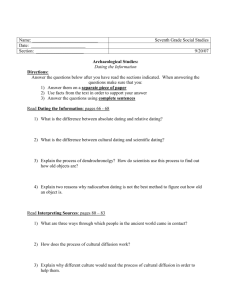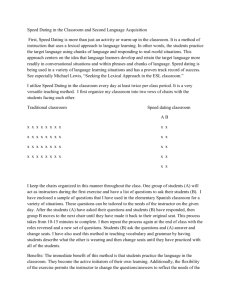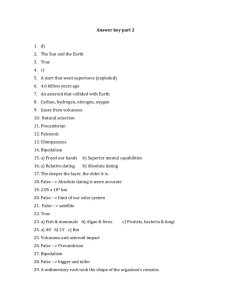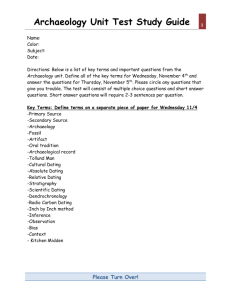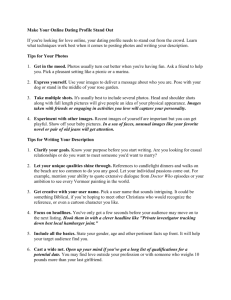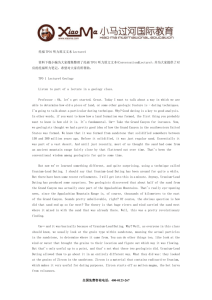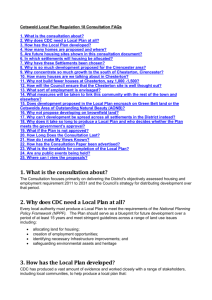DATING THE PAST - Cirencester Science & Technology Society
advertisement
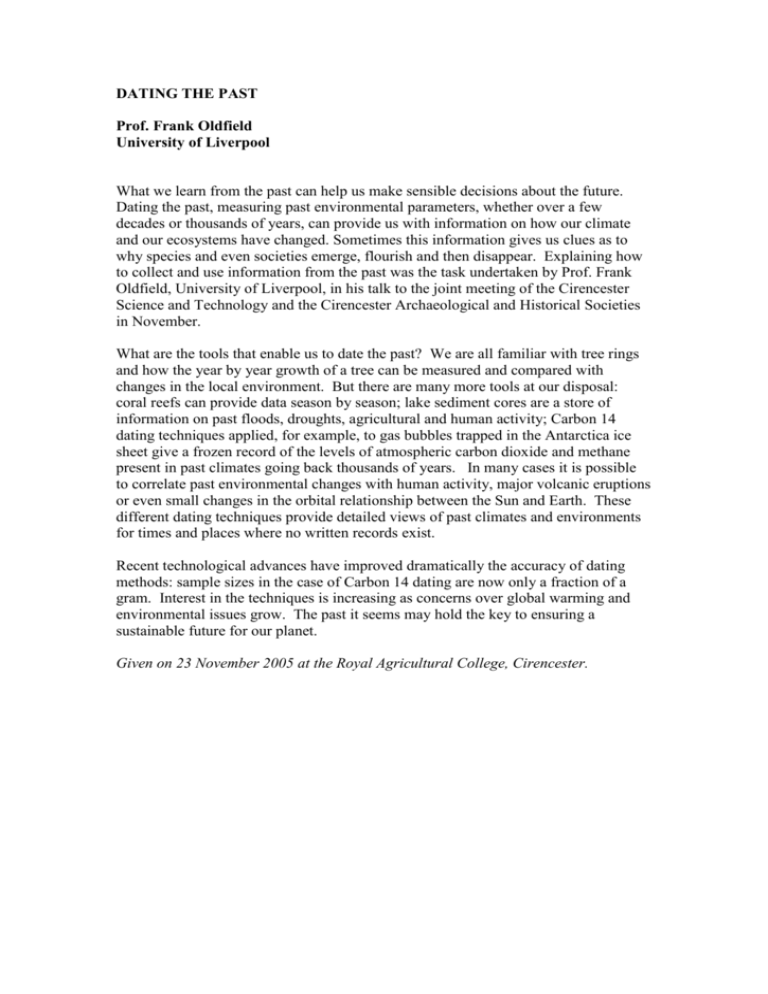
DATING THE PAST Prof. Frank Oldfield University of Liverpool What we learn from the past can help us make sensible decisions about the future. Dating the past, measuring past environmental parameters, whether over a few decades or thousands of years, can provide us with information on how our climate and our ecosystems have changed. Sometimes this information gives us clues as to why species and even societies emerge, flourish and then disappear. Explaining how to collect and use information from the past was the task undertaken by Prof. Frank Oldfield, University of Liverpool, in his talk to the joint meeting of the Cirencester Science and Technology and the Cirencester Archaeological and Historical Societies in November. What are the tools that enable us to date the past? We are all familiar with tree rings and how the year by year growth of a tree can be measured and compared with changes in the local environment. But there are many more tools at our disposal: coral reefs can provide data season by season; lake sediment cores are a store of information on past floods, droughts, agricultural and human activity; Carbon 14 dating techniques applied, for example, to gas bubbles trapped in the Antarctica ice sheet give a frozen record of the levels of atmospheric carbon dioxide and methane present in past climates going back thousands of years. In many cases it is possible to correlate past environmental changes with human activity, major volcanic eruptions or even small changes in the orbital relationship between the Sun and Earth. These different dating techniques provide detailed views of past climates and environments for times and places where no written records exist. Recent technological advances have improved dramatically the accuracy of dating methods: sample sizes in the case of Carbon 14 dating are now only a fraction of a gram. Interest in the techniques is increasing as concerns over global warming and environmental issues grow. The past it seems may hold the key to ensuring a sustainable future for our planet. Given on 23 November 2005 at the Royal Agricultural College, Cirencester.




